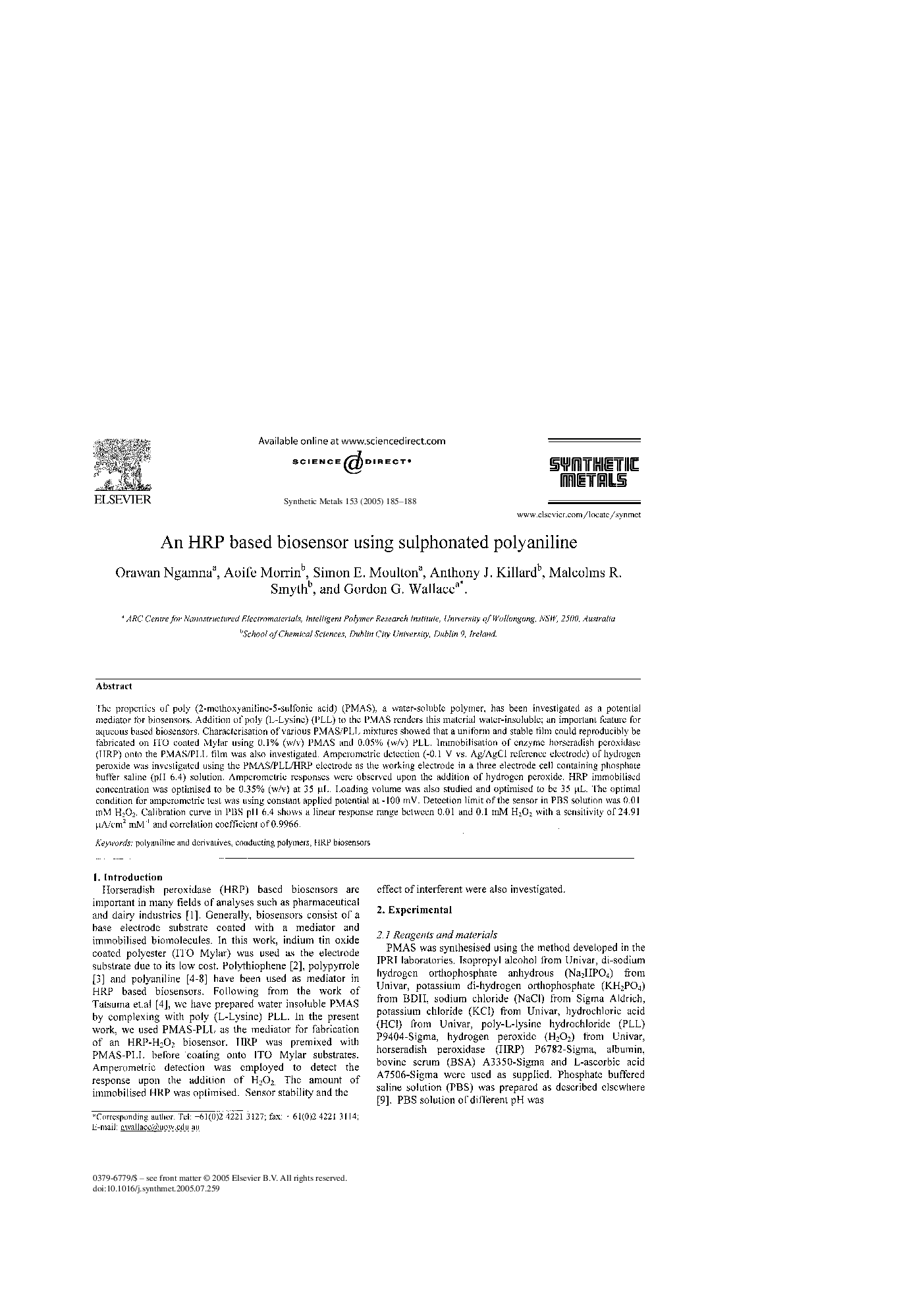| کد مقاله | کد نشریه | سال انتشار | مقاله انگلیسی | نسخه تمام متن |
|---|---|---|---|---|
| 9776333 | 1509484 | 2005 | 4 صفحه PDF | دانلود رایگان |
عنوان انگلیسی مقاله ISI
An HRP based biosensor using sulphonated polyaniline
دانلود مقاله + سفارش ترجمه
دانلود مقاله ISI انگلیسی
رایگان برای ایرانیان
موضوعات مرتبط
مهندسی و علوم پایه
مهندسی مواد
بیومتریال
پیش نمایش صفحه اول مقاله

چکیده انگلیسی
The properties of poly (2-methoxyaniline-5-sulfonic acid) (PMAS), a water-soluble polymer, has been investigated as a potential mediator for biosensors. Addition of poly (L-Lysine) (PLL) to the PMAS renders this material water-insoluble; an important feature for aqueous based biosensors. Characterisation of various PMAS/PLL mixtures showed that a uniform and stable film could reproducibly be fabricated on ITO coated Mylar using 0.1% (w/v) PMAS and 0.05% (w/v) PLL. Immobilisation of enzyme horseradish peroxidase (HRP) onto the PMAS/PLL film was also investigated. Amperometric detection (â0.1 V vs. Ag/AgCl reference electrode) of hydrogen peroxide was investigated using the PMAS/PLL/HRP electrode as the working electrode in a three electrode cell containing phosphate buffer saline (pH 6.4) solution. Amperometric responses were observed upon the addition of hydrogen peroxide. HRP immobilised concentration was optimised to be 0.35% (w/v) at 35 μL. Loading volume was also studied and optimised to be 35 μL. The optimal condition for amperometric test was using constant applied potential at â100 mV. Detection limit of the sensor in PBS solution was 0.01 mM H2O2. Calibration curve in PBS pH 6.4 shows a linear response range between 0.01 and 0.1 mM H2O2 with a sensitivity of 24.91 μA/cm2 mMâ1 and correlation coefficient of 0.9966.
ناشر
Database: Elsevier - ScienceDirect (ساینس دایرکت)
Journal: Synthetic Metals - Volume 153, Issues 1â3, 21 September 2005, Pages 185-188
Journal: Synthetic Metals - Volume 153, Issues 1â3, 21 September 2005, Pages 185-188
نویسندگان
Orawan Ngamna, Aoife Morrin, Simon E. Moulton, Anthony J. Killard, Malcolms R. Smyth, Gordon G. Wallace,